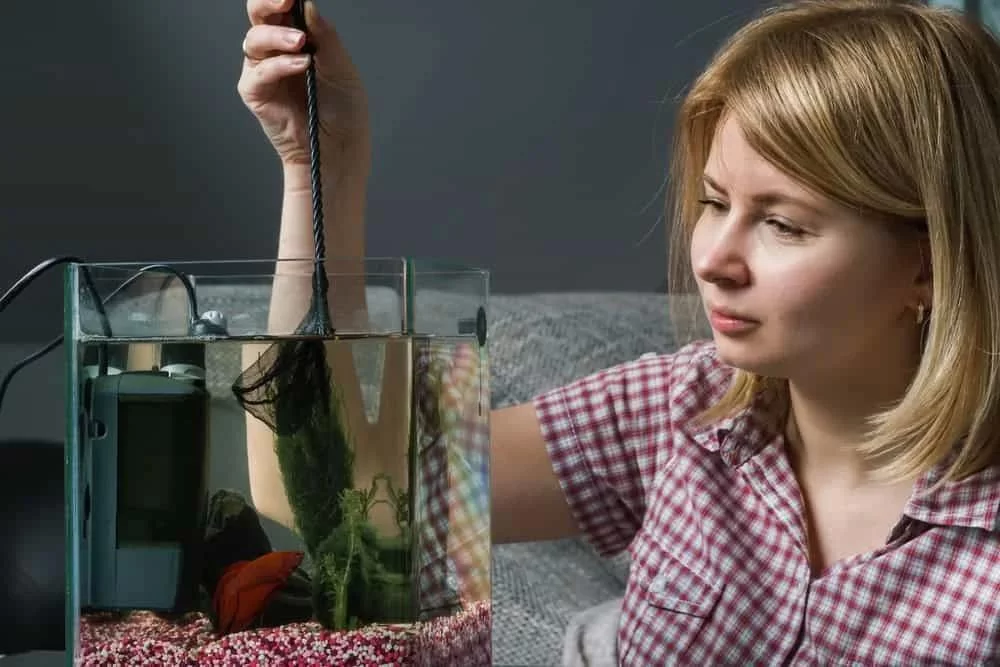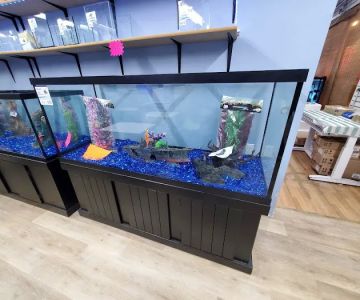- Natural Cleaning Methods for Fish Tanks
- Step-by-Step Guide to Chemical-Free Aquarium Maintenance
- Common Mistakes to Avoid When Cleaning Without Chemicals
- Real-Life Examples of Chemical-Free Tank Cleaning Success
- Expert Recommendations and Resources
1. Natural Cleaning Methods for Fish Tanks
Maintaining a clean fish tank without relying on chemicals may seem daunting, but it is entirely achievable with natural methods that prioritize the health of your aquatic environment. These chemical-free approaches help keep your fish safe from toxic substances while preserving the delicate balance of your aquarium's ecosystem.
One of the most effective natural cleaning methods involves using beneficial bacteria to break down waste products in the tank. This biological filtration method enhances water quality and reduces harmful substances without introducing harsh chemicals. Gravel vacuuming combined with partial water changes allows the removal of excess debris and organic material gently.
In addition, incorporating live plants can play a crucial role in maintaining water quality naturally. Plants absorb nitrates and provide oxygen, contributing to a healthier tank environment. Some aquarists also use natural scrubbing tools like algae pads or soft brushes to clean tank surfaces manually, which avoids chemical residues entirely.
1.1 Biological Filtration and Beneficial Bacteria
Biological filtration is a cornerstone of chemical-free tank care. Beneficial bacteria colonize filter media, breaking down ammonia and nitrites into less harmful nitrates. Maintaining this bacterial colony is essential — avoid over-cleaning filters or using untreated tap water to prevent killing these microbes.
1.2 The Role of Live Plants in Natural Cleaning
Adding live aquatic plants such as Java moss, Anubias, or hornwort introduces natural filtration. These plants absorb waste nutrients and reduce algae growth by competing for the same resources. Plus, they enhance the aesthetic appeal of your aquarium, creating a more natural habitat for your fish.
2. Step-by-Step Guide to Chemical-Free Aquarium Maintenance
Cleaning fish tanks without chemicals requires a careful, consistent routine. Below is a detailed guide to maintaining your aquarium naturally and effectively:
2.1 Preparing for the Cleaning Process
Start by unplugging any electrical equipment and removing decorations carefully. Use a siphon or gravel vacuum to clean the substrate without disturbing beneficial bacteria too much. Avoid washing decorations with soap or detergents; instead, rinse them with warm water.
2.2 Water Change Techniques
Perform regular partial water changes—typically 10-20% weekly. Use a water conditioner or let tap water sit for 24 hours to dechlorinate naturally if your local water contains chlorine. Maintaining water parameters such as pH and temperature stable is critical to prevent stress on fish.
2.3 Cleaning Tank Surfaces and Glass
Algae buildup can be gently removed using a magnetic algae scraper or soft sponge. Avoid abrasive tools that could scratch the glass. For stubborn algae, a vinegar solution diluted in water can be applied externally, ensuring no solution enters the tank.
2.4 Filter Maintenance Without Chemicals
Rinse filter media in aquarium water (taken during a water change) instead of tap water to preserve beneficial bacteria. Replace media only when it’s degraded, and never clean all filter components simultaneously to avoid disrupting filtration efficiency.
3. Common Mistakes to Avoid When Cleaning Without Chemicals
While chemical-free cleaning is beneficial, many aquarists unintentionally harm their tanks by missteps that disrupt the ecosystem.
3.1 Overcleaning and Killing Beneficial Bacteria
Excessive cleaning, especially frequent or thorough filter washing, can remove too many beneficial bacteria, leading to spikes in toxic ammonia or nitrites. Moderation is key to maintaining biological balance.
3.2 Neglecting Water Parameter Monitoring
Even natural cleaning requires consistent monitoring of ammonia, nitrite, nitrate levels, and pH. Ignoring these can cause unnoticed stress or illness in fish. Investing in a good quality water test kit is essential.
3.3 Using Unsafe Cleaning Tools
Some cleaning tools contain chemicals or rough materials that may scratch tank surfaces or leave residues. Stick to natural, aquarium-safe equipment to avoid unintended harm.
4. Real-Life Examples of Chemical-Free Tank Cleaning Success
Jessica, an aquarist from Oregon, shares her experience of transitioning to chemical-free tank maintenance after noticing her fish’s health decline due to overuse of chemical cleaners. By adopting natural methods such as increasing live plants and performing gentle substrate cleaning, her fish regained vitality and the aquarium ecosystem stabilized within weeks.
Another example comes from a popular online fishkeeping community, where members report success using natural products like Indian almond leaves and biofilters to maintain water quality without chemical additives. These stories reinforce that chemical-free cleaning is practical and effective when done correctly.
5. Expert Recommendations and Resources
For those interested in exploring the best products and expert advice on chemical-free aquarium maintenance, Hidden Brook Veterinary offers a range of tailored solutions. Their specialists can guide you in selecting natural filters, appropriate plants, and safe cleaning tools designed for healthy aquatic environments.
Moreover, consulting professional resources or local aquarium experts can provide personalized insights to suit your tank’s unique needs. Regular education and adapting to your tank’s condition are crucial to long-term success without chemical interventions.
Cleaning fish tanks without chemicals not only protects your aquatic pets but also fosters a more sustainable and enjoyable fishkeeping hobby. By following natural methods and learning from real experiences, you can maintain a thriving, beautiful aquarium environment.












